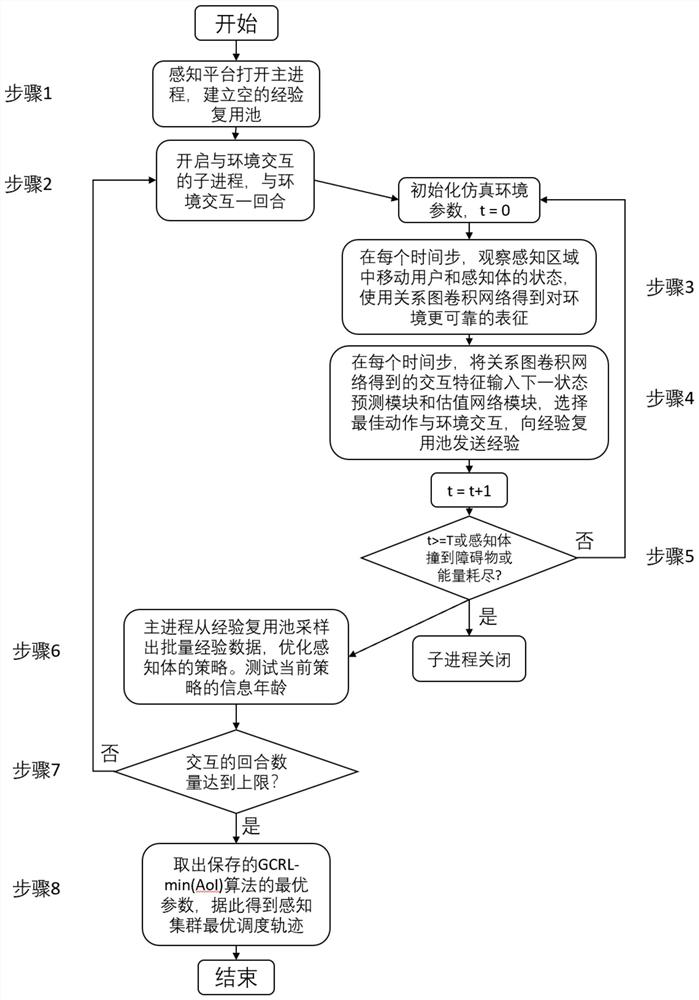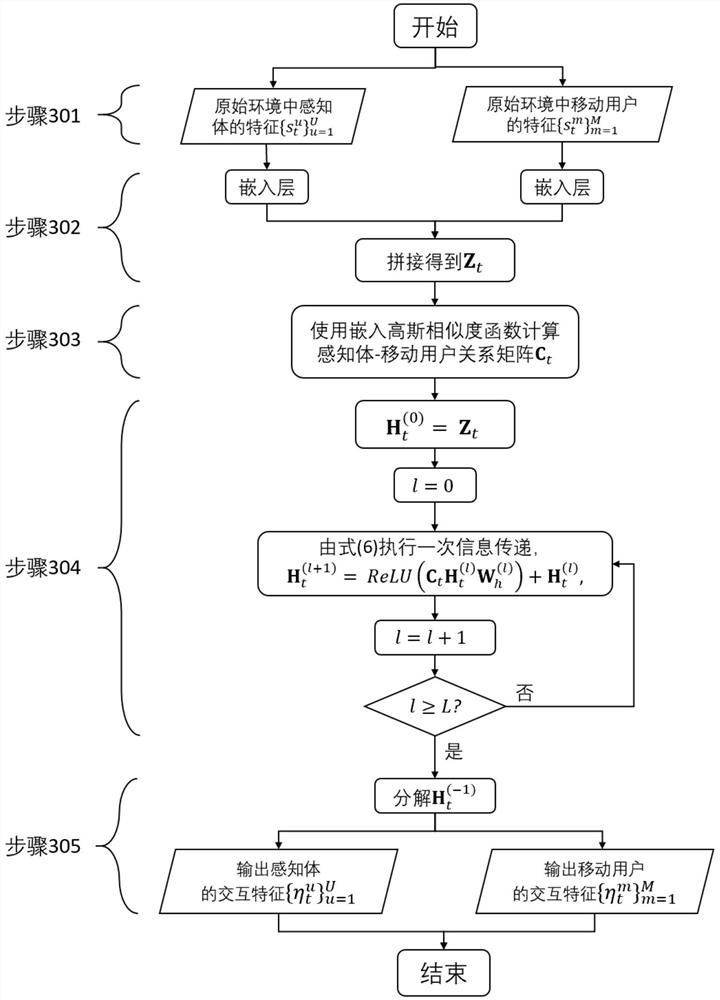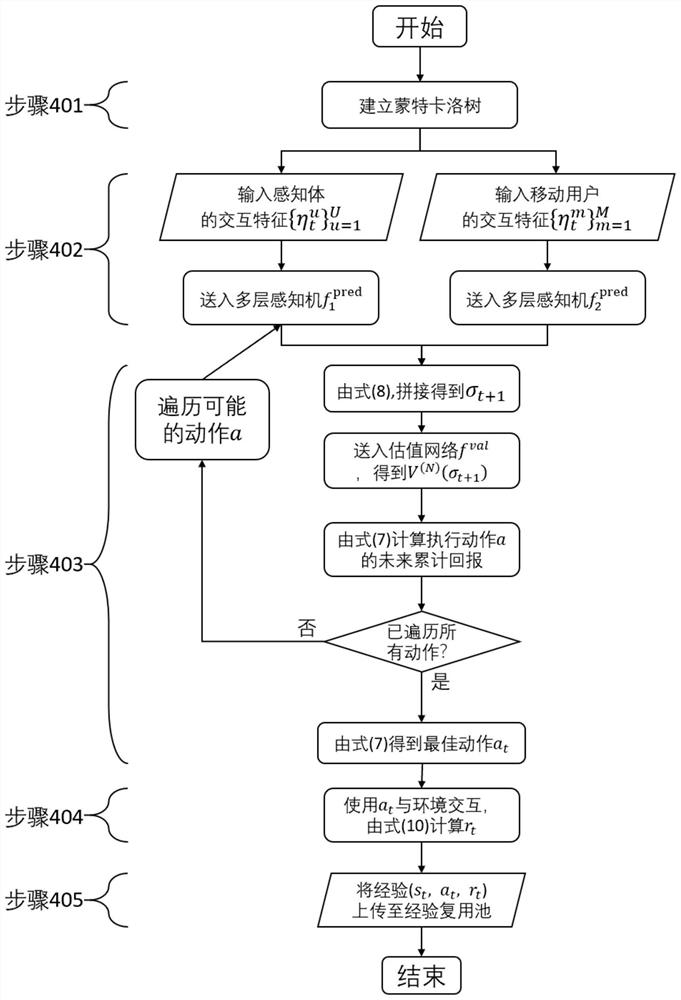Method for using graph convolution reinforcement learning to minimize information age in group perception
A group perception and reinforcement learning technology, applied in the field of group perception, can solve the problems of uncontrollable movement of mobile users, difficult evaluation indicators, large energy consumption, etc., to minimize the age of information, avoid high-cost failures, and reduce excessive dependence. Effect
- Summary
- Abstract
- Description
- Claims
- Application Information
AI Technical Summary
Problems solved by technology
Method used
Image
Examples
Embodiment Construction
[0069] The content of the present invention will be further described in detail below in conjunction with the accompanying drawings of the description. The method of the present invention comprises the following steps:
[0070] Step 1, such as figure 1 As shown, the perception platform opens the main process, establishes an empty experience multiplexing pool and initializes the parameters of the GCRL-min (AoI) algorithm, and the parameters of the algorithm include the parameters of the relational graph convolutional network, the parameters of the next state prediction module, the estimated the parameters of the value network;
[0071]Step 2. The sensing platform starts a sub-process that interacts with the environment. The sub-process interacts with the environment for one round, and establishes a simulation environment for a group sensing scene. U sensory bodies are deployed as executors for sensing data collection. There are M mobile devices in the environment. The initial...
PUM
 Login to View More
Login to View More Abstract
Description
Claims
Application Information
 Login to View More
Login to View More - R&D
- Intellectual Property
- Life Sciences
- Materials
- Tech Scout
- Unparalleled Data Quality
- Higher Quality Content
- 60% Fewer Hallucinations
Browse by: Latest US Patents, China's latest patents, Technical Efficacy Thesaurus, Application Domain, Technology Topic, Popular Technical Reports.
© 2025 PatSnap. All rights reserved.Legal|Privacy policy|Modern Slavery Act Transparency Statement|Sitemap|About US| Contact US: help@patsnap.com



